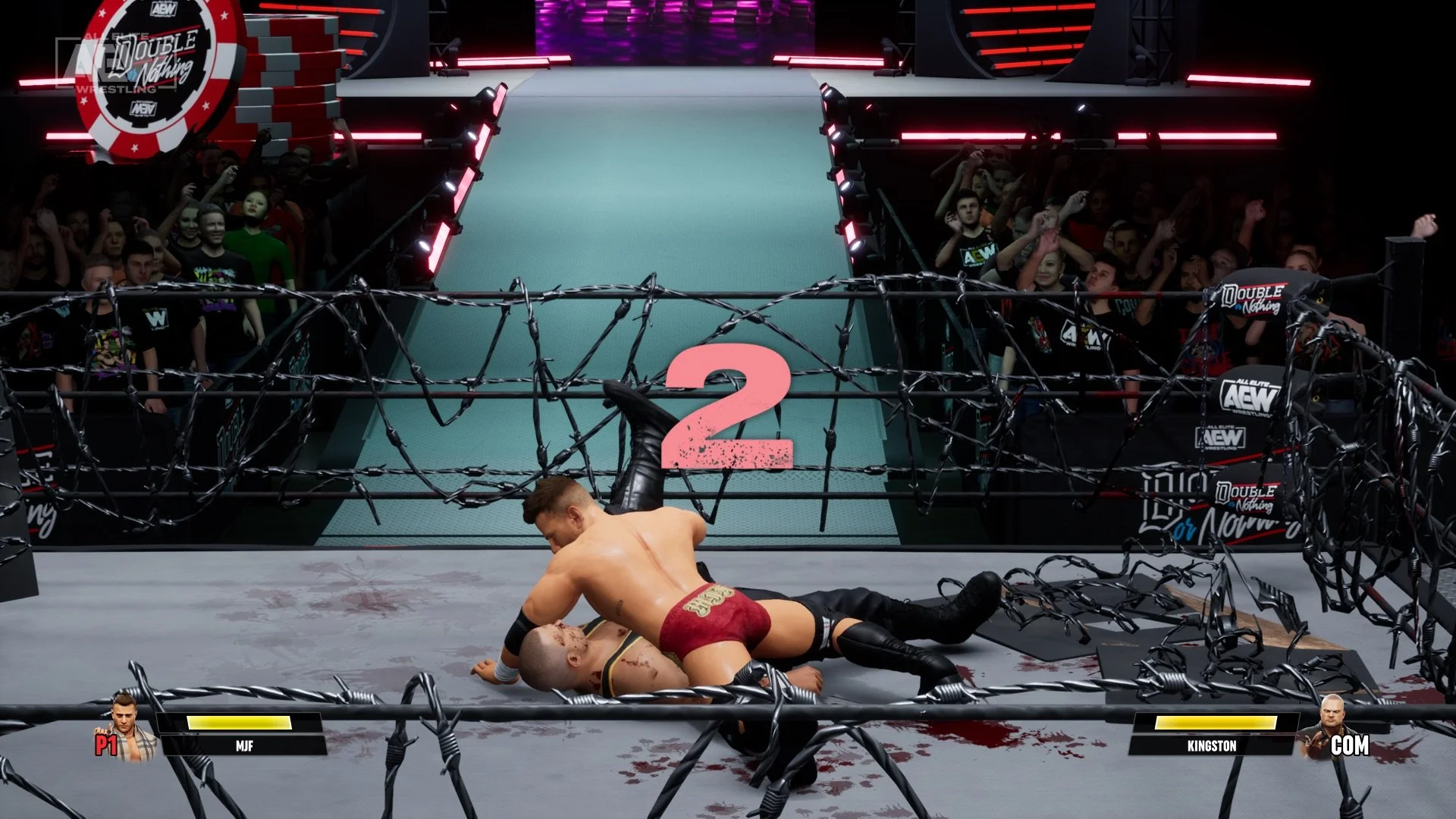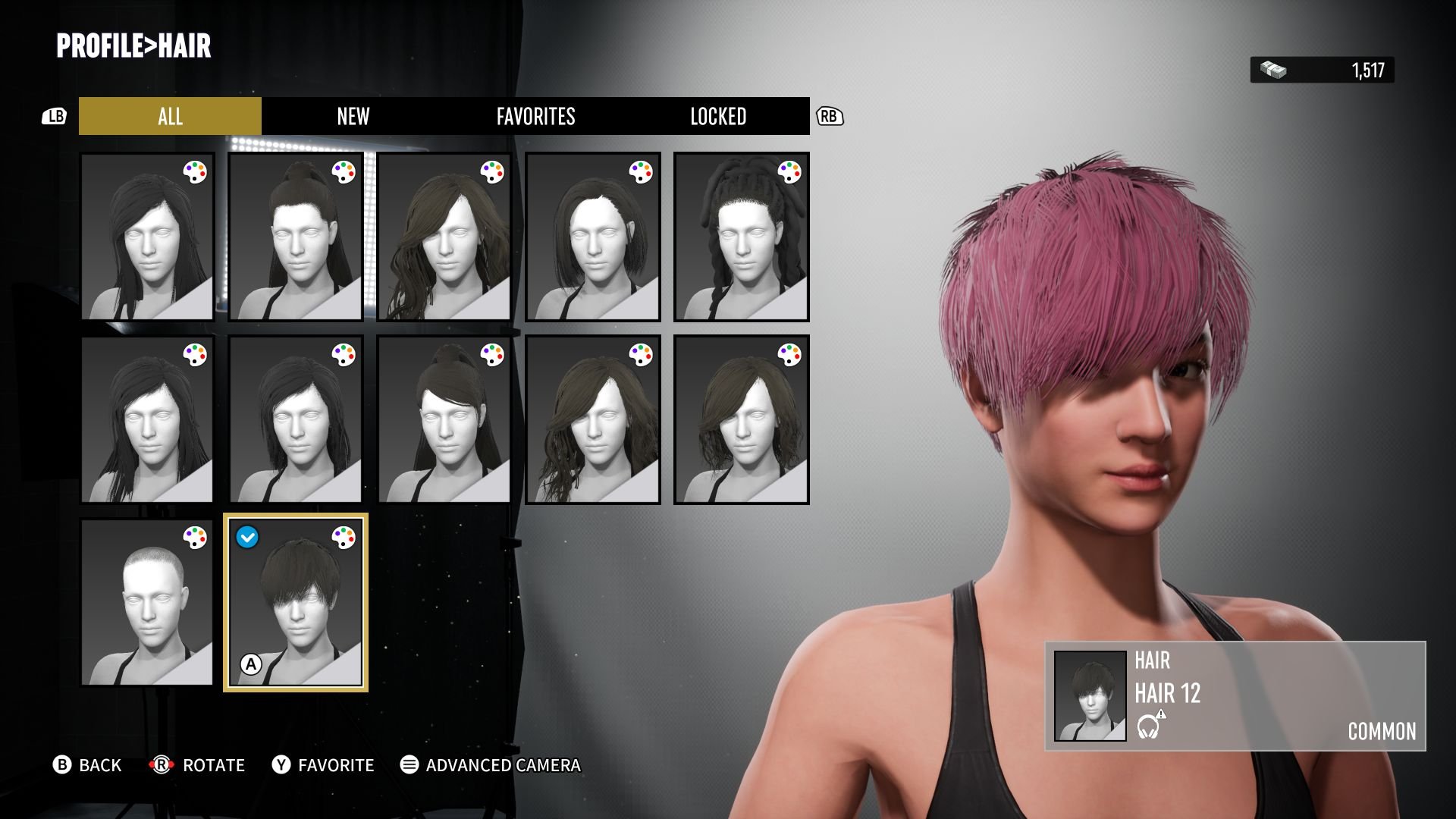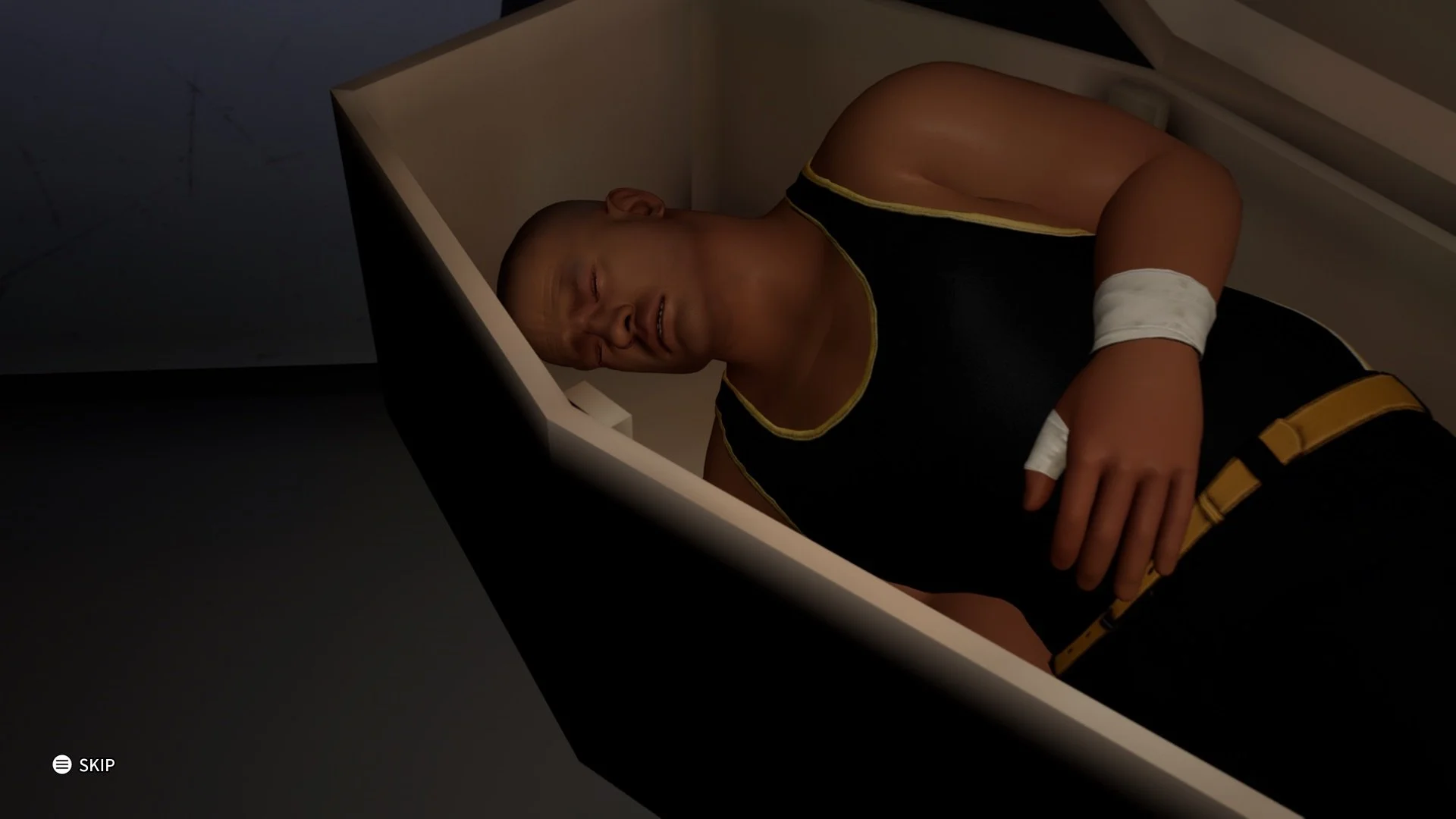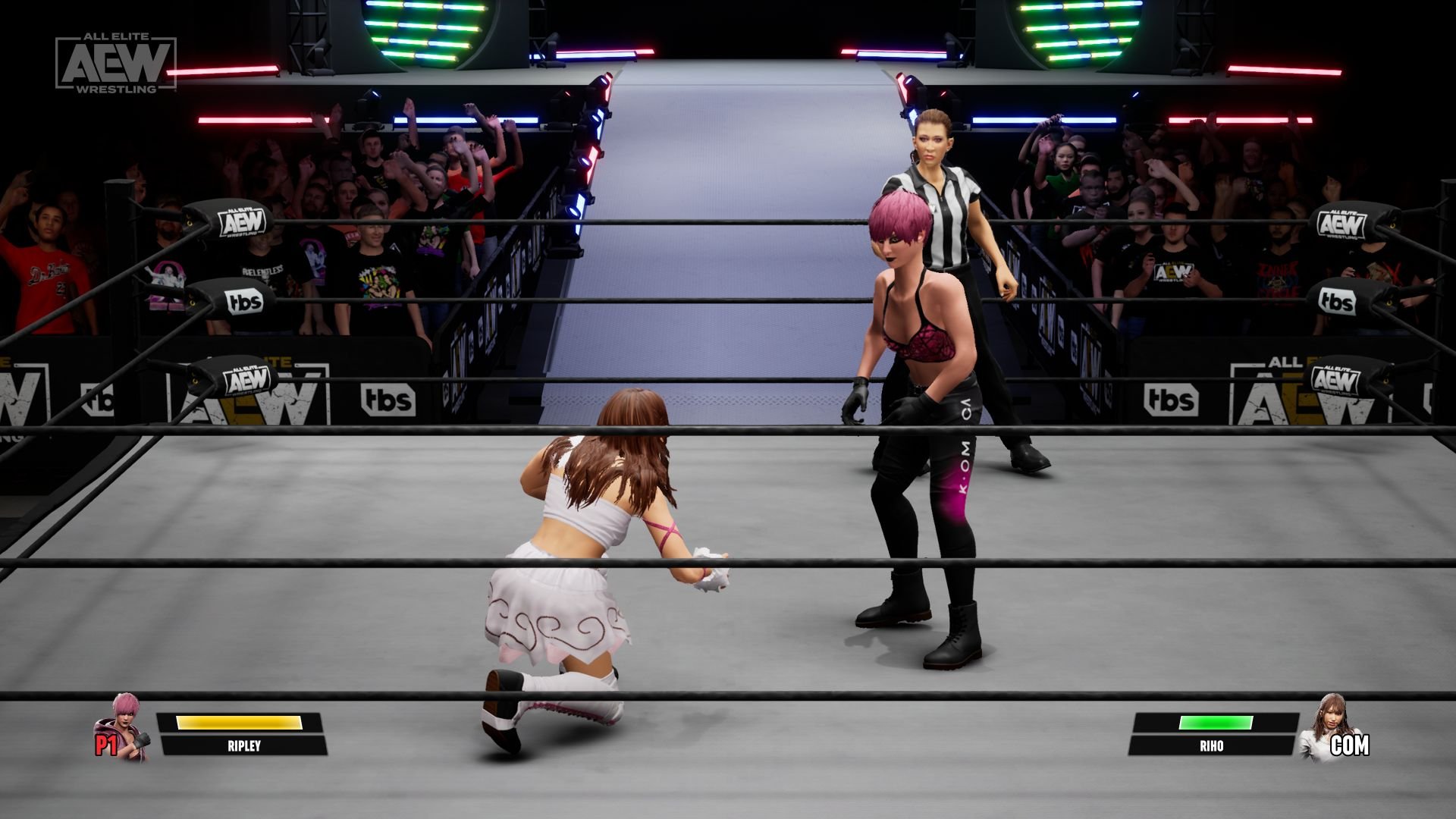A Solid Foundation
My love for professional wrestling coincidentally was around the time that I started to really take an interest in video games, almost cementing them as some sort of unholy union. In that time, I have seen both professional wrestling and their video games change and evolve almost alongside each other. From the Nintendo 64, with games like WCW/NWO Revenge, which, in fact, was the first ever wrestling game I ever played, to the latest WWE 2K release, showing an immense evolution alongside the newest and latest hardware.
The latest evolution in professional wrestling has been the AEW, the first real avenue of competition to the WWE, since the buyout of WCW some years past. In doing so, AEW has reached out to a market that the WWE has dominated for years, video games. AEW: Fight Forever, while a release in 2023, looks to the past for inspiration. However, can it build on the greats of the past or will it pale in comparison and let its dated mechanics and lesser budget tip the scale? Let’s talk about it.
The first time you load up AEW: Fight Forever, you will first notice a unique visual style that is less about perfect realism and more stylized in nature, certainly playing to the strength of the game’s budget. The wrestlers themselves often have this almost action-figure quality to them and not in a bad way ala WWE 2K Battlegrounds. The crowd and arenas all have a more grounded representation, considering the scale of the outfit itself, but they aren’t going for the TV feel of the WWE games.
This more simpler approach is something I can appreciate, however, the wrestlers themselves can suffer from this minimalistic endeavor, such as Andrade El Idolo, who simply doesn’t look the part and stands out like a sore thumb across its 40+ roster. This is especially an issue when wrestlers like Dustin Rhodes, Jeff Hardy, and Britt Baker are damn near perfect. While WWE’s latest have suffered from similar issues, they at least have the budget to pull that off more consistently.
If you’ve played the N64 classics such as Revenge, No Mercy, or Wrestlemania 2000, you will be immediately familiar with the gameplay of AEW: Fight Forever. It almost perfectly embodies that arcade spirit that older fans such as myself loved those games for. This is a game that is simple to pick up and play but hard to master. Don’t worry if you aren’t familiar with those games, since you will get some tutorial pop-ups in your first few matches to help you with basic controls. Oddly, however, there is no tutorial that teaches the more advanced fundamentals, you really have to seek that out on your own.
For its basic controls, you have the ability to grapple, punch, kick, and run. On Xbox, these are A, X, Y, and B, respectively. You also have two block/reversal buttons, one for strikes on RB and the same for grapples on LB. You then have taunts on the right stick, and the ability to raise your fallen foe with RB or RT to flip your opponent over on the mat.
There are more in-depth controls that the game doesn’t teach you such as diving out of the ring (as long as your wrestler has the right skills) but these can be found in the menus. I really enjoyed these easy-to-pick-up controls although I must say that the reversal timing felt very inconsistent. This meant that I often didn’t actually feel in full control of defending myself. Of course, there are also some specific controls for certain match types but these are made very clear where necessary, usually tutorialized by William Regal himself.
When it comes to pulling off your finishers or signature moves, this is done by fueling your momentum meter with basic attacks, performing well in a match, to simply taunting your opponent. This momentum meter also acts as a way to visualize your health, notifying you when your wrestler is in danger. Then, when your move is available, depending on your choices of signature moves or devastating finishers, the game will prompt you to press the corresponding button. As a default-created superstar, you start with the ability to pull off one of each, something that can be increased through the career mode if you so choose.
When it comes to the different match options, this is where things start to be a little more limited especially when compared to the more comprehensive WWE 2K offerings. In AEW: Fight Forever, there are nine different match options to choose from. These include a few variations of One vs One, such as making you follow the rules of a normal match, Lights Out, which is weapon-based, and Falls Count Anywhere, even though there is nowhere to go apart from around the ring and entrance ramp. Yup, there is not even a backstage area or parking lot to battle in. One interesting secret about taking the fight up the ramp is being able to destroy the screen with a few well-timed suplexes.
In regards to the rest, we have standard Tag matches, Three-Way, and Four-Way, as well as the classic Ladder Match, which is oddly limited to One vs One only. You also have the Casino Battle Royale Match, which for those unfamiliar with AEW is their version of the Royal Rumble. So, pretty basic right? Luckily, Jeff and I had a lot of fun with one more match type, which is the Exploding Barbed Wire Death Match. This was a match that for years was seen as too violent for TV of any kind, before it made its way to AEW in a match between Kenny Omega and Jon Moxley. Of course, AEW fans know how that one went but I am delighted to say that the video game version is much closer to what we had all hoped for. It’s an absolute blast! In more ways than one.
The game’s simpler controls and arcade style make every match type enjoyable, especially since you can take all of them online as well in both ranked, casual or private matches. In the limited matches we had during the review period, we thankfully didn’t experience a single disconnection, although matchmaking did take a bit to actually connect us. We did however run into a small number of bugs and glitches particularly when playing two vs two tag matches. On one occasion, the game just completely wrestled control of my character and continued to perform actions, such as combat outside of the ring, without me inputting a single command. I also experienced multiple instances of rolling out of the ring to have my character stand on the apron, clutching the ropes, and was completely unresponsive. While they would eventually return to their tag corner, this issue happened several times.
Any wrestling game worth its time has always included the ability to create your own superstar and arena. While the ability to craft your own championship is not present here, let’s dive into the creation suite that is here. AEW’s create a superstar allows you to make a male or female wrestler, as well as create a tag-team set of those characters or any of the roster. The options at your disposal just aren’t deep enough for any of these creations to truly feel like your own. As you cannot select various face options, you are left with selecting from a shortlist of preset faces and limited hair options, especially with the female roster.
You can unlock some more options via the shop, like moves, entrances, and some basic apparel options, but these additions are disappointingly minimal at launch. These options are then purchased using in-game money earned through just playing and completing different daily or weekly challenges. These challenges range from playing X amount of matches to getting a certain match rating. These challenges definitely add a layer of replay value that helped to keep me engaged. Unfortunately, even with all the cash I had to unlock all these additional options, creations still feel super limited. My hope would be that over time the in-game store is updated with even more options and other things to use my in-game cash on, especially as I have now since purchased every single thing the game has for me. With AEW planning on updating the game as time goes on, I can only hope that more care goes into the customization options.
One change from the competition is that you’ll affect the stats of your created wrestler through the game’s career mode in Road to Elite. This mode has you go through an entire year of AEW’s beginnings, showing the history of their business via a few well-edited videos. As a male superstar, you start off with an invite from Tony Khan to compete in the Casino Battle Royale at AEW’s Double or Nothing pay-per-view, whereas via the female route, you’ll have a four-way match with other female superstars. Oddly enough, if you lose that match your journey as a female superstar basically then intersects with the male’s journey, pitting you against wrestlers such as Chris Jericho, CM Punk, and more.
The stories in this mode aren’t really that interesting and feel completely disconnected and never pay off their little narratives. One week I was a Tag Team champion, the next week I was being recruited by another group in a completely separate story. In fact, I still don’t know if I ever lost those Tag Team Championships! This disconnected nature is made worse by the lack of any sort of voice-over, whether in the ring or otherwise, leaving some poorly written text dialogue in its place. Had the game included these moments fully voiced by the wrestler themselves, then it could have given the game some much-needed personality as these scenes struggled to keep me engaged.
The game features some light RPG-style progression, which I did enjoy. In between each show, you’ll have the option to take on up to four different activities before the main event. From sightseeing for extra motivation to mini-games with Nick and Matt Jackson for upgrade points to talking to fans at meet and greets, including a fan who says they have all your t-shirts and yet have only wrestled a single match. In regards to the sightseeing, each of these moments has your character standing in front of a jpeg, complete with a cyclist on Venice beach simply frozen in time. You’ll also attend a wealth of diners to eat food based on your character’s preference for vegetarian or non-vegetarian cuisine.
In addition to the pay-per-view events that move what little of a story is here forward, you’ll also be targeted to appear on AEW: Dark as well as AEW: Rampage, against a host of competitors. While these matches add to the overall career mode length, it’s bizarre that the matches don’t detail your opponent, leaving you to wonder if you were meant to fight CM Punk on either of the two shows.
These distractions benefit you in the form of a few features. Motivation affects your momentum. Food provides energy, and you’ll also earn credits and upgrade tokens that then allow you to place points into various systems such as how effective your finishers are, the overall damage your kicks and punches do as well as your speed. This is among a host of passive increases and skill upgrades as well, such as jumping to the top turnbuckle quicker instead of a slower climb up, thus saving you time in order to leap off and damage your opponent.
This sense of progression and earning those currencies even made the mini-games feel more meaningful. Despite clearing all the mini-game presented during the career mode, I was only able to play three of them outside this mode, which was a bit odd. When taking in all the mini-games on offer, you have a decent variety in an AEW quiz, a dancing rhythm game with Penta, a poker chip collecting game, tossing propane tanks at point-centric targets, bashing point-valued boxes, and more. You can access some of these outside this mode but, as mentioned, only three seem to be available at the start.
Road to Elite is designed to be replayed and with its branching stories, there is some value here, especially as both myself and Jeff seemed to experience different events and rivalries across each of our careers. Ultimately, none of these stories had me engaged enough to want to replay the mode. As someone that enjoys a wacky but cohesive story in a wrestling game, that is deeply disappointing.
While I mentioned earlier that I experienced a few issues, most of those were limited to the online modes and less when offline. That being said, I frequently had texture pop-in issues. If you take a look at Eddie Kingston’s face above, you’ll notice that his detailed face texture is just not there. This is made even more bizarre in that just seconds prior his face was fine. This happened multiple times, especially with Christian Cage’s torso for some reason.
All that being said when it comes down to it, AEW: Fight Forever, at its core, is an incredibly fun game to play and a nostalgic blast from the past; a must-try for any Nintendo 64-era wrestling game fan. I just wish that the offerings built around the gameplay weren’t so limited because that’s ultimately what holds this game back from being among the greats. So, although it’s not effectively layin’ the smackdown in the video game space, it has built a solid foundation for AEW to continue to add to it over the next few years, evolving and growing like the business itself.
A second glance by Jeff Young
AEW Fight Forever is intentionally inspired by an era when wrestling games finally found their footing, moving away from 2D sprites to present our favorite stars in glorious 3D. And, much like the business it stems from, wrestling has been a constantly evolving beast, changing with the times and becoming something more than just displaying our favorite wrestlers on lunch boxes and Saturday morning cartoon shows.
AEW Fight Forever may have a decently sized roster that has more faces I don't know than I do, as I'll admit, I only know of AEW based on who they have acquired from WWE, but the collective of personalities here is nonetheless impressive if a bit outdated and missing some current stars like Toni Storm and Samoa Joe. It’s also bizarre that Matt Hardy is locked behind a pre-order deal, effectively splitting up him and his brother Jeff Hardy.
While previous WWE games have certainly brought the good in terms of a robust feature set, a stunning create-a-character system, and impressive visuals, the gameplay has evolved into something I rarely find enjoyable to play largely due to its dense controls that are simply not that fun to use. Fight Forever brings that simple arcade-like feel to the forefront, giving us a game that feels ripped from the N64 with visuals that while don't really impress, provide a unique look to distance itself from the competition. Although, its budget is clearly the determining factor for that here.
While its career mode didn't quite grab me, or its shockingly hollow creation toolset for creating an All-Elite Superstar, the available modes and online play have certainly engaged me to stick with it, taking my created superstar along for the ride and into stardom. As Jordan mentions in his review here, AEW: Fight Forever may be shallow and disappointing in some respects, but it's a damn fun game to play and that means a lot.
Developer - Yukes. Publisher - THQ Nordic. Released - June 29th, 2023. Available On - Xbox One, Xbox Series X/S, PS4, PS5, Nintendo Switch, Windows. Rated - (T) Blood, Language, Mild Suggestive Themes, Use of Alcohol and Tobacco, Violence. Platform Reviewed - Xbox Series X. Review Access - A review code was provided by the publisher for the purpose of this review.





















I’m Jordan I have a background in game design and am deeply passionate about accessibility in gaming. My favourite games/franchises include Shenmue, Red Dead Redemption 2, Plague Tale: Requiem, Metal Gear Solid 3, Yakuza, Splinter Cell, and Assassin’s Creed.